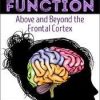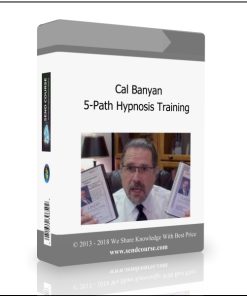Sensory Techniques for Trauma, Self-Harm, and Dysregulation – Brooke Wimer | Available Now !
$199.00 Original price was: $199.00.$56.00Current price is: $56.00.
Sensory Techniques for Trauma, Self-Harm, and Dysregulation – Brooke Wimer | INSTANTLY DOWNLOAD !
Do you work with clients who become acutely dysregulated and engage in behaviors which present as a danger to self or others leading to a seclusion and/or restraint episode?
Join Brooke Wimer, MOT, OTR/L, who has over 10 years of clinical experience in the field of occupational therapy. She has developed novel programming regarding sensory processing/ modulation to decrease self-injurious behaviors and the utilization of seclusion and restraint.
Brooke will provide an interactive course with hands-on opportunities to:
- Provide trauma-informed, sensory supportive care in the hospital, classroom, clinic and home
- Develop sensory-based, therapeutic techniques for your most challenging clients
- Deliver research driven interventions for people with:
- Intellectual disabilities
- Sensory processing disorders
- Depression and bipolar disorders
- PTSD and anxiety disorders
- Dementia and Alzheimer’s
- Behavioral and personality disorders
- Substance abuse disorders
These interventions are breakthrough techniques to apply with those who have mental health needs and traumatic histories. This workshop will provide you with countless sensory techniques for use in crisis situations and ongoing symptom management. This trauma-informed approach offers client-centered tools for feeling safe; sensory modulation techniques allow clients to direct their care by exploring and selecting modalities that work for them.
- Describe neurological changes following the occurrence of trauma and impacts to function and occupational performance.
- Discuss client and organizational benefits of decreasing episodes of seclusion and restraint and incidences of self-injurious behavior.
- Utilize trauma-informed care and recovery approaches to apply sensory supportive care to your practice.
- Differentiate between OT-specific and multidisciplinary-based sensory supportive care and treatment spaces.
- Select sensory-based assessment tools and implement treatment strategies to support clients across the continuum of care.
- Identify how to help clients manage anxiety and racing thoughts with calming bottles.
Trauma’s Effect on the Brain and Nervous System
- Impact of sensory-input in relation to behavioral responses
- The sensory experience of triggers, flashbacks and psychosis
- Models and research that support sensory-based practice
- Frequency, duration and intensity of sensory input
Seclusion and Restraint – Current Practices
- Self-injurious behaviors
- Re-traumatization
- Risk of injury or death
- Loss of control, fear and hopelessness
- Perpetuates cycle of violence
Assessment Tools
- Adolescent/Adult Sensory Profile
- Sensory Integration Inventory
- The Sensory Modulation Screening Tool
- The Sensory Diet Checklist
- The Sensory-Motor Preference Checklist
- Sensory Defensiveness Checklist
Clinical Outcomes using Sensory Strategies
- Manage agitation, dissociation, aggression and self-injury
- Improve level of arousal
- Increase activity tolerance and participation
- Increase self and environmental awareness
- Manage hyperactivity and improve concentration
- Manage anxiety and improve sleep
- Promote wellness and recovery
Sensory Strategies for Regulating!
- Sensory diets
- Sensory rooms and relaxation corners
- Sensory Modulation Program
- The Alert Program and Brain Gym
- Sensory Connection Program
- Weighted modalities
- Compression garments
- Sensory boxes and carts
- Tai Chi and meditation
- “Heavy Work”
- Environmental modifications: murals, open-spaces, seating options and aromatherapy
Tag: Sensory Techniques for Trauma, Self-Harm, and Dysregulation – Brooke Wimer Review. Sensory Techniques for Trauma, Self-Harm, and Dysregulation – Brooke Wimer download. Sensory Techniques for Trauma, Self-Harm, and Dysregulation – Brooke Wimer discount.
1 review for Sensory Techniques for Trauma, Self-Harm, and Dysregulation – Brooke Wimer | Available Now !
Add a review Cancel reply
Related products
Ecommerce
NLP & Hypnosis
Ecommerce
Ecommerce
Ecommerce
Ecommerce












Cristian Wise –
Very pleased | Sensory Techniques for Trauma, Self-Harm, and Dysregulation – Brooke Wimer